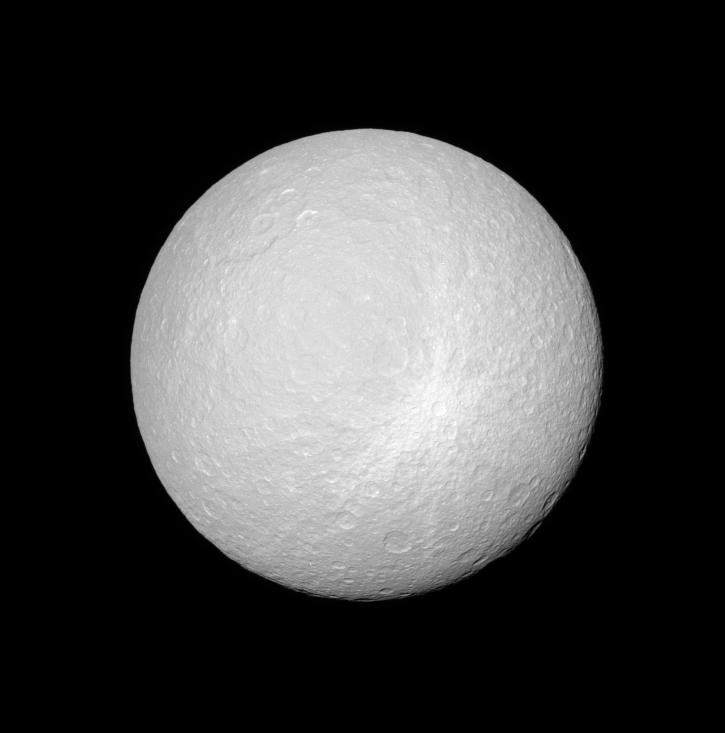The Rays of Rhea

| PIA Number | PIA09841 |
|---|---|
| Language |
|
The Cassini spacecraft views Rhea and the bright, rayed crater that is likely one of the younger features on the moon's surface. The impact excavated fresh material from beneath the ground, which spread out in this pattern as it fell back to Rhea.
This view, centered on 12 degrees south latitude, 133 degrees west longitude, predominately encompasses the anti-Saturn side on Rhea's leading hemisphere. North is up and rotated 28 degrees to the right. Icy Rhea is 1,528 kilometers (949 miles) across.
The image was taken with the Cassini spacecraft narrow-angle camera on Jan. 17, 2008 using a combination of spectral filters sensitive to wavelengths of polarized green light centered at 617 and 568 nanometers. The view was obtained at a distance of approximately 538,000 kilometers (334,000 miles) from Rhea and at a Sun-Rhea-spacecraft, or phase, angle of 9 degrees. Image scale is 3 kilometers (2 miles) per pixel.
The Cassini-Huygens mission is a cooperative project of NASA, the European Space Agency and the Italian Space Agency. The Jet Propulsion Laboratory, a division of the California Institute of Technology in Pasadena, manages the mission for NASA's Science Mission Directorate, Washington, D.C. The Cassini orbiter and its two onboard cameras were designed, developed and assembled at JPL. The imaging operations center is based at the Space Science Institute in Boulder, Colo.
For more information about the Cassini-Huygens mission visit http://saturn.jpl.nasa.gov . The Cassini imaging team homepage is at http://ciclops.org .
Credit: NASA/JPL/Space Science Institute
